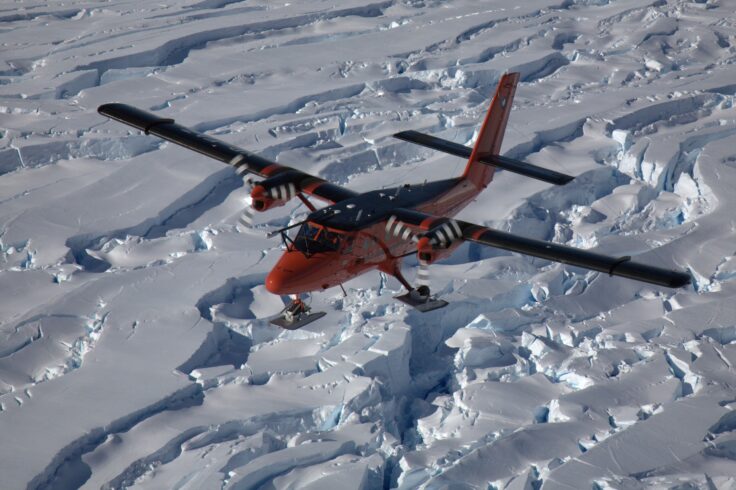ANTARCTIC BLOG: Polar guide flies into the field – #4
25 November, 2015 Flichner Ice Shelf, Rothera
A week after iBeam departed, our aircraft arrived at Sky-Blu from Rothera to take us further into the field, to our winterised vehicles, to our start point. The call sign of the aircraft was V-BB and the pilot was Steve King, combined they earn the nickname ‘BB King’, fitting as Steve is half human half aircraft!
One of the most experienced pilots with BAS, it’s amusing when flying over Antarctica with him and you hear different call signs transmitting over HF radio and he casually mentions, almost to himself, “I flew 8000 hours in that aircraft” then later a different call sign will transmit and he will say “I did 5000 hours in that aircraft, she used to fly like a dream until [so and so] bent the airframe. She never flew the same after the repair.” and so on. Indeed BB King is the only person I’ve taken my tent down in the field for before the aircraft has landed during an uplift in marginal weather. The highest compliment a Field Guide could give a pilot in the Antarctic in my book. It’s definitely not standard practice and not recommended.

Because the distances are so big in the Antarctic BB King rested at Sky-Blu for a night and we set off the next day. It was a familiar sound as the engines powered up, intensely whirring and buzzing until we began to speed across the ice runway. Once we lifted off the ground it was a familiar sight watching the shadow of the Twin Otter, with its distinctively huge tail fin, peel away from us. A large black print projected on to the white and blue snow getting smaller and smaller as we gained altitude. Then came the satisfying, relative peace from the propellers turning from fine to feather signifying we were ‘airborne’. We passed some small Nunataks until they became sparser and less prominent until soon the surface below opened into the vast expanse of the Ronne Ice Shelf. Flat and white is the easiest and most common way to describe parts of the continent but that belittles the magnitude of the place. It over simplifies the little details, the nuances that make the place so penetrating and consuming. It fails to address the huge chasms and ice canyons that open up for no apparent reason. It doesn’t mention the subtle but county wide undulations in the ice or the lattices of crevasses, chequered with holes from collapsed snow bridges. The term doesn’t indicate anything about the snow that has been sculpted by the wind creating patterns called Sastrugi. It doesn’t mention anything about what is indeed one of my favourite things about the Antarctic and that is the drifting and blowing snow, the consistent and persisting granules and particles of snow, snaking and weaving across the ground, masking the sky and biting at ones cheeks and nose in the high winds. The term “Flat White” means all of this and more. It means solitude and space. It means looking at 360degrees of perfect, razor blade like, horizon. It means standing under and realising how big the sky is. It means simplicity and purity. It can mean peace and calm. That’s what I mean when I say “flat white” and it’s as far away as you can get from a ‘flat white’ in Starbucks at Liverpool St. Station.
After a couple of hours we landed on to take on more fuel from a depot at Korff Ice Rise. It was bitterly cold and there was an icy wind. The fuel drums only needed digging out a little bit in order to access them and test them to make sure they hadn’t been contaminated with water. Then it was time to lay out the hoses and get the pump ready. The cold motivates you to move quickly but in doing so I banged my head on one of BB’s doors, then after pumping on board the fuel I dismantled the hoses at the wrong time and (as I was standing downwind) I got sprayed with jet fuel, adding insult to injury. We packed up and all got back in the aircraft. I jumped into the co-pilot’s seat and threw my fuel soaked gloves on the floor, cursing and grumbling like Mutley from the Whacky Races. The King looked at me, smirking, shaking his head and without speaking asking me “What the hell are you doing? “
“It’s the first day in the field proper, give me a break” I say, interspersed with a series of expletives.
He chuckles and I remind myself that out here; ‘We start slow and then take it down from there!’ otherwise things go wrong and they go wrong quickly.
We take off once again for the final leg to our site.
Field Guide Ashly Fusiarski is supporting the Filchner Ice Shelf System project which aims to determine how a large sector of the Antarctic Ice Sheet will evolve in a warming world.